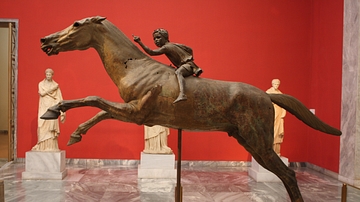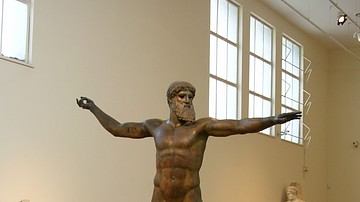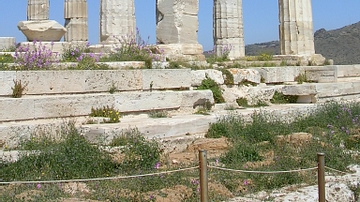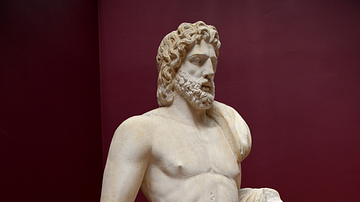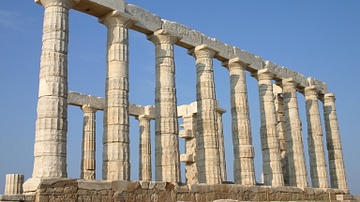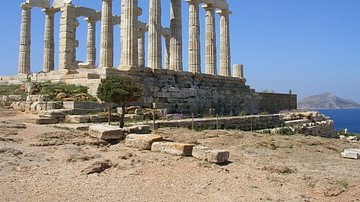Illustration
The Artemision Bronze is a slighter larger than life sized statue recovered from the sea off Cape Artemision that represents either Zeus or Posiedon; the right hand either originally held a thunderbolt or a trident. The statue's creation dates to c. 460 BCE before the development of the classical style in the later half of that century, however, the context in which it was found was much later, around the 2nd century BCE, presumably part of a sunken Roman ship's cargo. The statue was found in 1926 CE and then excavated in 1928 CE; it currently holds a prominent position within the National Archaeological museum at Athens. A cast of it can also be found at the cast gallery of Cambridge University's Museum of Classical Archaeology.
About the Author
Cite This Work
APA Style
Lloyd, J. (2012, July 18). The Artemision Bronze. World History Encyclopedia. Retrieved from https://www.worldhistory.org/image/776/the-artemision-bronze/
Chicago Style
Lloyd, James. "The Artemision Bronze." World History Encyclopedia. Last modified July 18, 2012. https://www.worldhistory.org/image/776/the-artemision-bronze/.
MLA Style
Lloyd, James. "The Artemision Bronze." World History Encyclopedia. World History Encyclopedia, 18 Jul 2012. Web. 14 Apr 2025.



